A Card, and 3 Simple Ways to Begin Your Valentine’s Day Dinner
This post may contain affiliate links. Please read my disclosure policy.
So often, for me at least, the best part of a dinner out happens shortly after I am seated, when the server sets down a warm roll with a pat of soft butter sprinkled with sea salt or a basket of freshly baked focaccia and a little dish filled with olive oil swirled with a few drops of balsamic vinegar. It’s these simple details that, when done well, distinguish the meal from one prepared at home, when such delights are often absent and when relishing every morsel is not always the order of the hour.
With that in mind, I have a few very simple ideas for beginning a Valentine’s Day dinner at home. If you thrive at arranging delicious things on plates, ideas 1 and 2 are for you. If you like to fuss a little bit more, idea number 3 might interest you more.
But before we get to the food, let’s discuss cards. You have to begin Valentine’s Day with a card, right? I’ve added four Valentine’s Day cards to the print shop, including the above pictured one, Parmigiano Love. Each Valentine’s Day card costs $3 and can be shipped to you for the price of a stamp (45 cents).
(Sorry … cards are not available at this time.)
Finally, the winner of the Wisconsin Cheese Giveaway is Dona. I have emailed you.
Ok, now for the food, starting with the least labor intensive:
#1. Splurge on a yummy cheese.
A wedge or a round of really good cheese won’t set you back much more than $10, and if you’re dining at home on Valentine’s Day, just consider it free, a little gift from cupid, because you would be spending boodles more out at a restaurant. I nearly cried at the grocery store when I spotted a little disk of Delice de Bourgogne, a triple crème cheese I thought resided only in France and in legitimate cheese shops here. Like Brillat Savarin and Explorateur, Delice de Bourgogne is creamy and rich and goes down easy — it’s almost cheating. This triple crème has a nice stank, too, and don’t let that deter you — it tastes much milder than it smells, and its thin chalky rind and smooth buttery paste are so unbelievably delicious.
What’s more, its beverage pairing of choice is champagne. It couldn’t be more perfect for Valentine’s Day. As with most cheeses, be sure to let it sit at room temperature for an hour or so before serving.
#2: Sprinkle Burrata with Sea Salt and Drizzle it with Olive Oil…truffle if you have it.
Burrata, as you all know, on its own is one of the most delicious cheeses (foods?) ever created. While additional seasonings are totally unnecessary, a little sprinkling of sea salt and a drizzling of olive oil (truffle, if you have some, is a serious treat) truly heighten its deliciousness. Because burrata’s shelf life is short, I have taken pains to make sure none of it has gone to waste these past few days, enjoying it morning, noon and night spread onto toasted bread with the above-mentioned adornments. It has been heavenly.
#3: Make an Herb-Infused Olive Oil and Serve it with Freshly Baked Bread
At home, I always reach for the butter when I have fresh bread on the table. But a dinner at Bistro Bethem several months ago reminded me of the joys of dipping bread in good olive oil and balsamic vinegar. If you have some good olive oil on hand, by all means, just pour some into a shallow dish and kick off your evening. But if you don’t, know that making an herb-infused oil — I chose basil — is incredibly easy and rewarding: after a very brief heating (about a minute) of the herbs and oil together on the stovetop, followed by a two-hour (at least) steeping, a decent olive oil becomes a magnificent one, both aromatic and flavorful, a delectable recipient for homemade bread.
PrintBasil Olive Oil
- Total Time: 2 hours 10 minutes
- Yield: 1 cup
Ingredients
- 1 cup extra-virgin olive oil
- a bunch of basil*, about 1 1/2 cups packed
*I chose basil, and I used stems and leaves during the steeping process. Feel free to substitute your herb of choice for the basil.
Instructions
- Holding the basil over a small saucepan, cut it, using scissors, into chunks and let it fall into the pan. Pour oil over top. Turn the burner to high, and when you see the basil leaves start to flutter in the oil, turn the heat down to low and let the herbs heat for no more than one minute — lift the pan from the heat source if the herbs and oil are moving too rapidly. Remove pan from the heat source. Let basil steep for 2 hours at least — you can make this in the evening and let it steep overnight, too. Strain the oil into a storage jar, squeezing out as much of the oil from the basil as you are able. (Note: It feels wasteful discarding the basil after the steeping. One thing you can do is purée it in a food processor or blender and then rub it on chicken or steak with some minced garlic for a simple marinade.)
- Prep Time: 5 minutes
- Cook Time: 5 minutes
Basil oil and balsamic caramel:
Drizzled with olive oil and sprinkled with rosemary and sea salt, the peasant bread dough makes a nice faux focaccia. I’ve updated the peasant bread recipe with this variation if you want to try it out. But, if you want to make a true focaccia, this Peter Reinhart recipe is wonderful.
This post may contain affiliate links. Please read my disclosure policy.


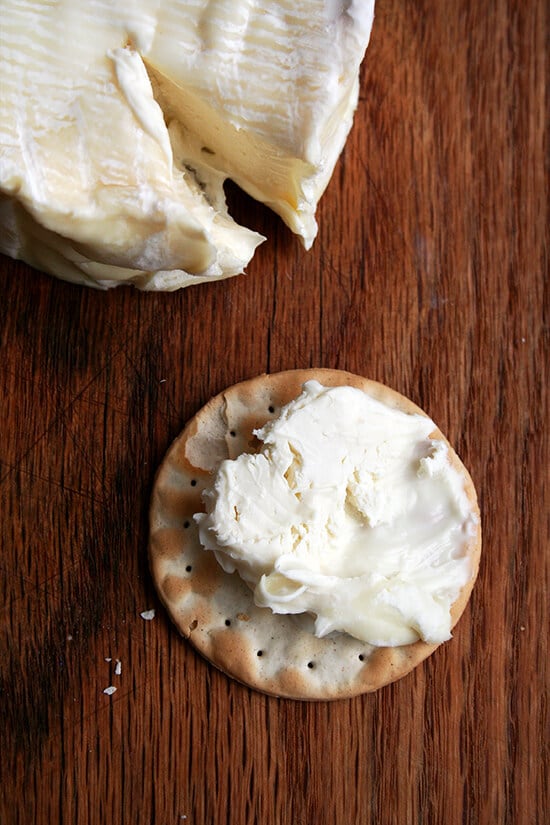
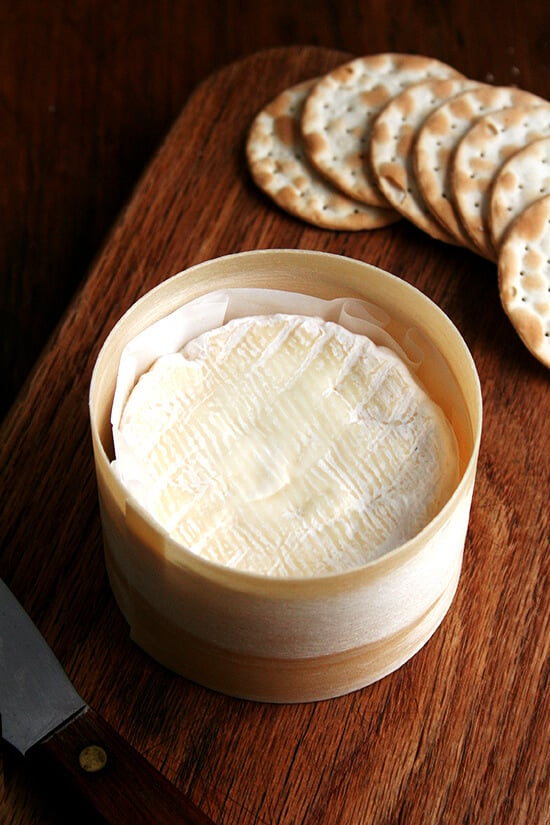



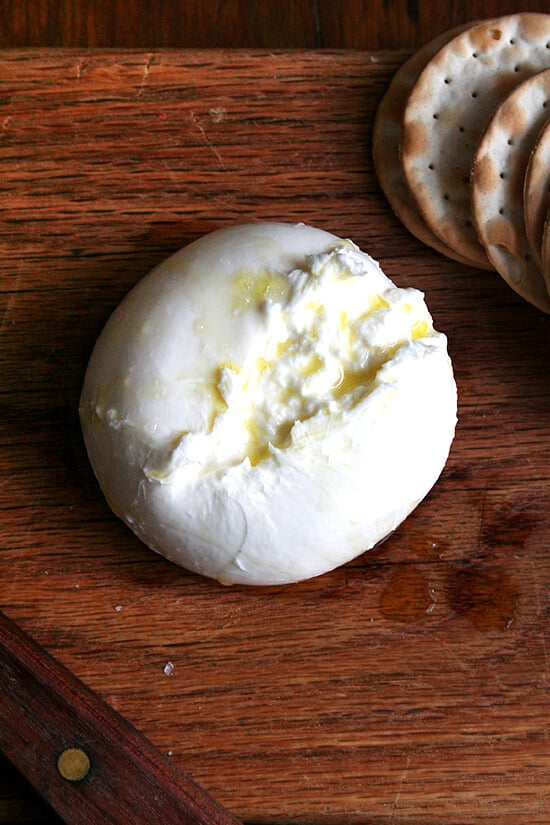

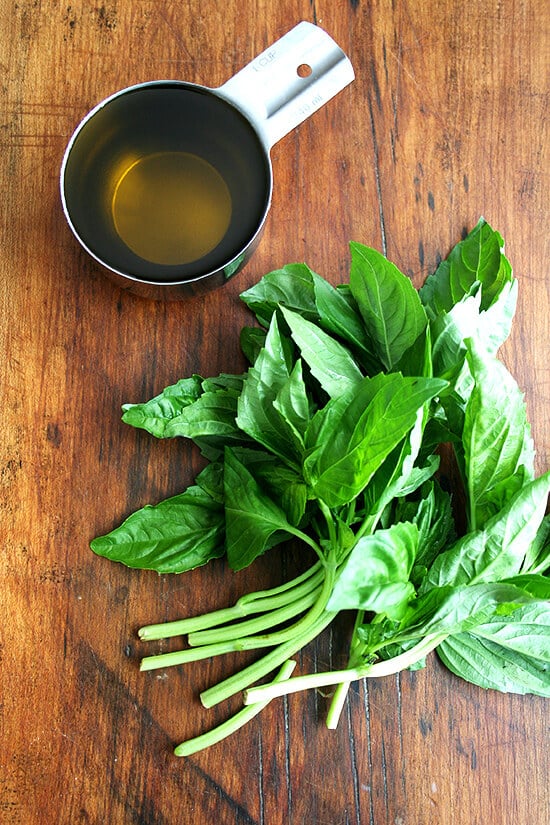
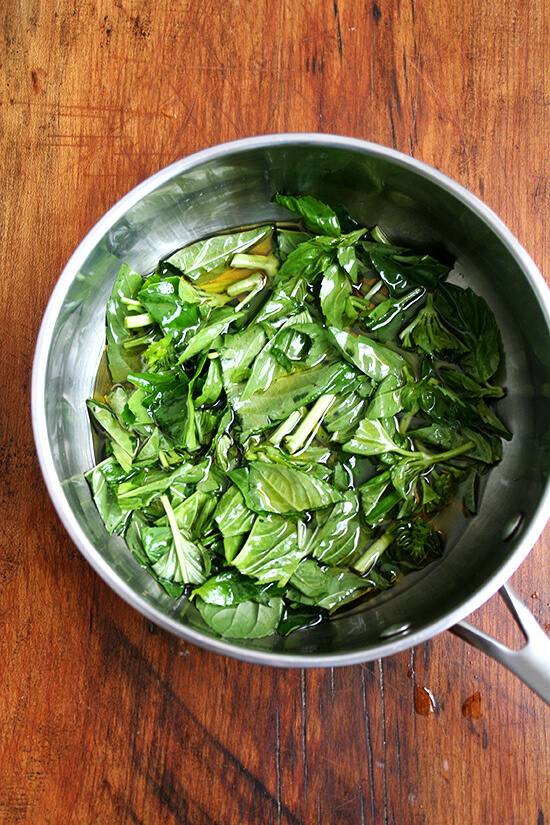
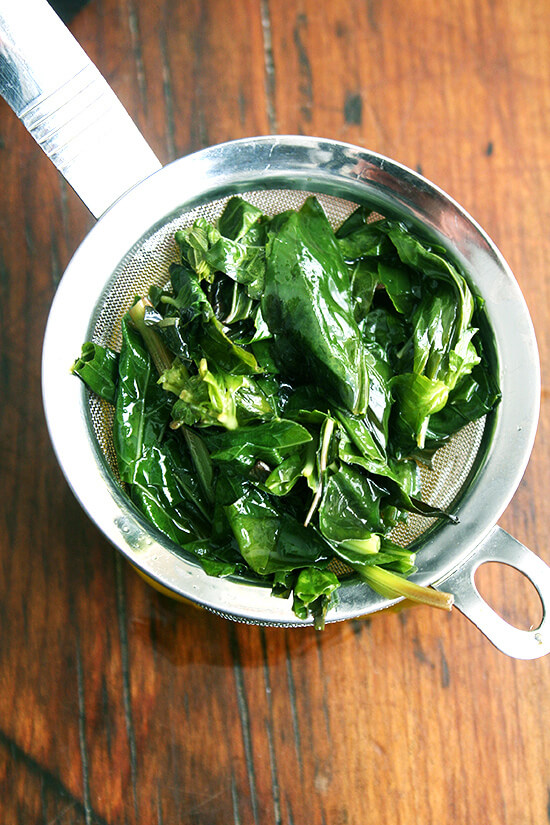

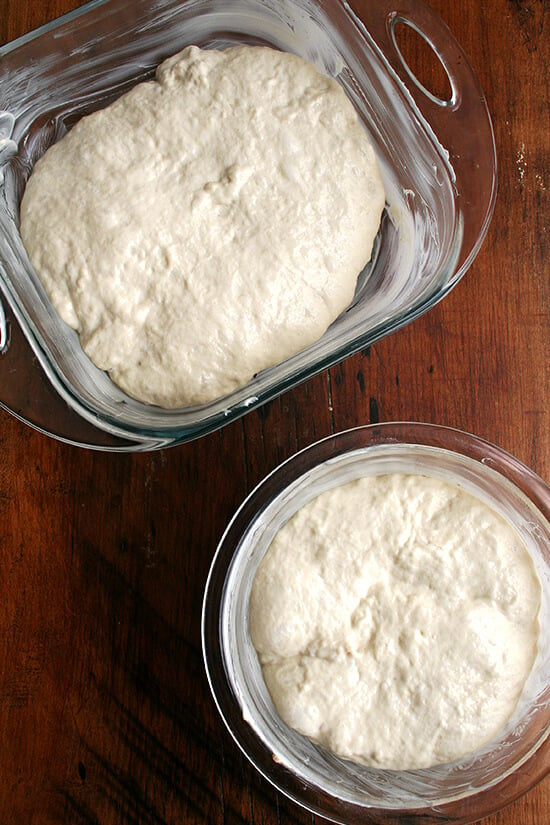
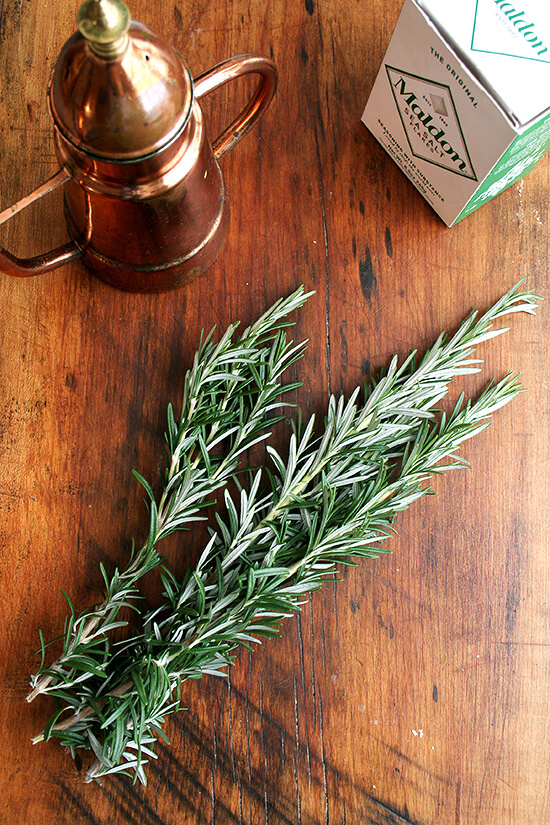
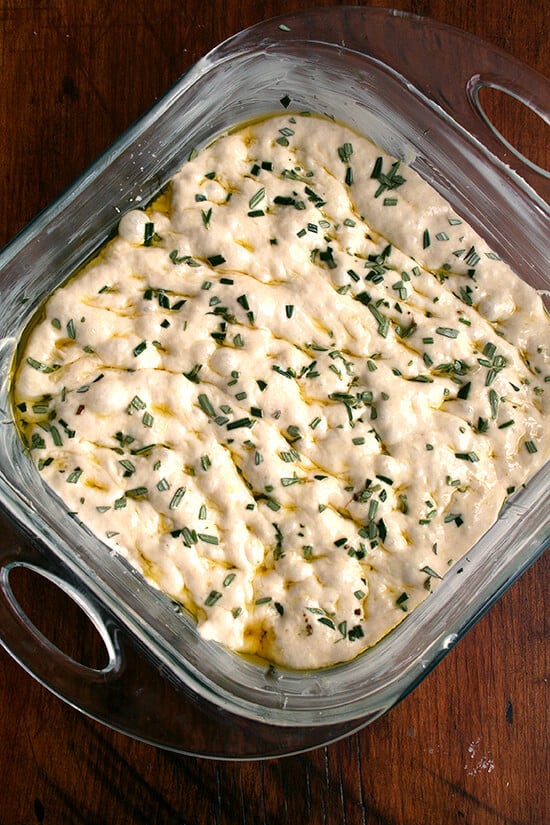
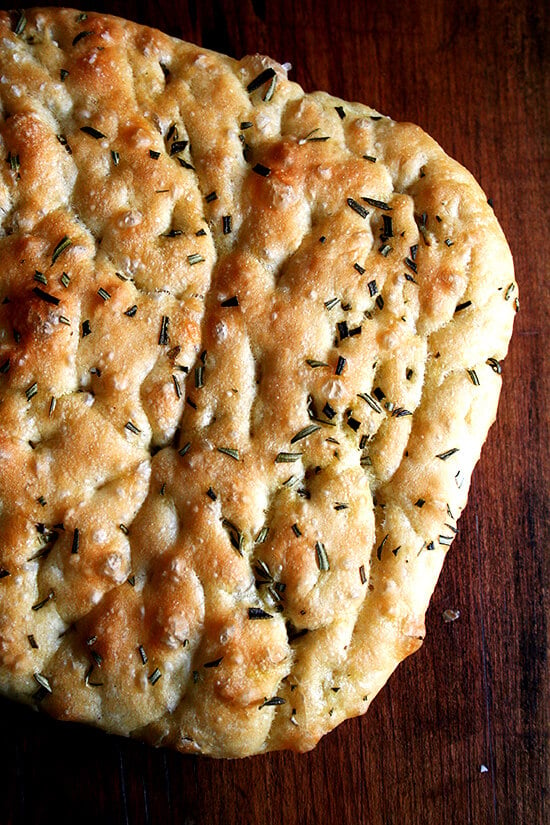



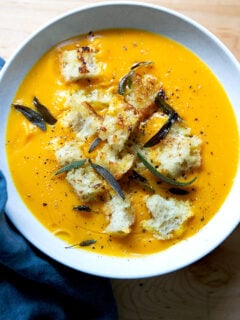

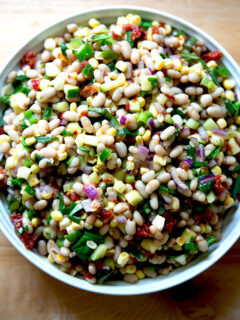




18 Comments on “A Card, and 3 Simple Ways to Begin Your Valentine’s Day Dinner”
Great ideas! I’d certainly love to make our belated Valentine’s Day meal more special with my long-distance boyfriend.
(And you mentioned Bistro Bethem – love it there. Do you happen to live here in Fredericksburg?!)
Katie, I live about 20 minutes north of Fredericksburg. Don’t get down there as often as I would like. But I do have a dinner at Bistro Bethem planned for the weekend! I can’t wait to see what’s on their winter menu.
Where do you buy your burrata in DC? I used to have it at A16 (with olive oil and sea salt) when we lived in the Bay area. It is heavenly!
Kelly — I bet Whole Foods and maybe Trader Joe’s sells it. Also, I am sure some of the specialty cheese shops in the city carry it — I actually live about 45 minutes south of the city, so I don’t get to explore too often in DC. Do you have a Wegman’s near you? That’s where I found this burrata pictured here. Purists would probably poo-poo this brand, Bel Gioioso, but it is truly delicious. I was shocked at how good it was. I read this article about the founder, too, and he definitely knows his stuff: https://cheeseunderground.blogspot.com/2007/11/belgioioso-burrata.html
Thanks! I think that I may have seen Bel Gioioso at Whole Foods. I think that they used a burrata from LA at A16- Gioia? I may have to give Cheesetique a call.. Thanks for reminding me about this wonderful cheese!
Kelly, you are most welcome! I never made it to A16 when I visited SF while living on the west coast, but I just looked at their website, and omg this looks like just my kind of place. That pizza! Those salads! That chocolate cake sprinkled with salt! It looks heavenly. Good luck finding your burrata!
So many delicious ideas. And burrata….oh wow. I can’t wait to try it with sea salt. I’ve never done that before! I think I have a burrata problem. It’s one of my true favorites. And I agree with you, I could eat it all day long!
Thanks for all the great cheese “splurge” options. I will have to try some of them out. My favorite “special occasion” cheese is Cow Girl Creamery’s Mt. Tam. Have you had it? I’m constantly trying to come up with an excuse to buy it…..
Dalton, thank you for reminding me about Mt. Tam. I haven’t had it in ages, but I remember loving it. That and is it Red Hawk that is particularly stinky? I think so. Love that one, too. And, once again, it has been too long. We need to catch up. xoxo
I learned what Burrata just the other day – I am so excited to try it, it sounds great. Just have to figure out where they sell it. The Delice de Bourgogne looks sooo good!
Alexandra, maybe you know it already but about a year ago I discovered a new french cheese “Saint Angel” it’s also a triple creme cheese like yours above and it’s out of this world. If you like soft french cheese you’ll love this one.
I splurged on a piece this week, and put some between my omelet this morning since the kids are having a snowday 🙂
Thanks for the great ideas as always!
Dorothea, I have not heart of Saint Angel, but I will look when I’m at the grocery store this weekend. It sounds heavenly…now I’m craving that sort of an omelet! It is freezing here, too. Good day to stay inside and eat triple crème cheeses and eggs. Yum. Hope you’re staying warm!
These look delicious. I love all three options! I’ve ever been one for valentines day, but seeing as hubby will be away for our first wedding anniversary (which is only 11 days later) we thought we’d celebrate.
Clare — oh…sad about hubby not being around for the first anniversary. An early celebration is a must! Happy 1st Anno!
These all sound like fabulous ideas for Valentines or any special dinner.
I have a question about truffle oil. I’ve been checking it out at food stores and am not sure what type to buy. Do you use the white or dark or both?
Judy — I always buy the white, but I think that’s mostly bc I think that’s what I find more often. I don’t think you can go wrong with either — it’s so good! And a shame it’s so pricey…but a little goes a long way. Hope you find a bottle you like!
You are the best food blogger, chef, and baker and I wish you lived next door to me so we could talk food and eat all day.
Oh Meres, me too! Let’s work on us moving to Philly, k? Miss you. Lets catch up soon. xoxo
Two cheeses I’ve never tried – your description made me drool, so now their on this week’s list! Hope to find at the local Whole Foods or the cheese store in Wellesley.
And I’ve never tried infusing oil myself, but now I must. And if I’m going to make tasty oil, I definitely have to make your Mom’s peasant bread!
Phew, this is gonna be a busy culinary week!